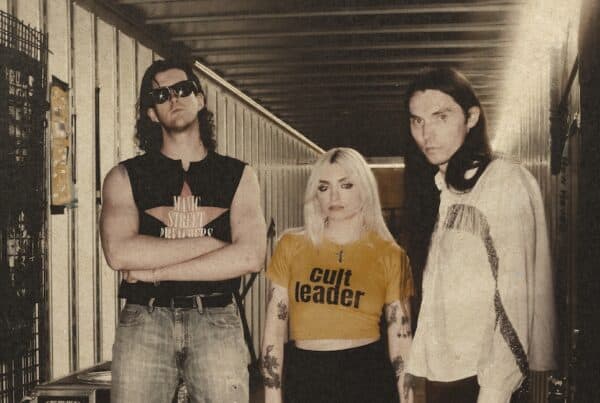Unless you’ve been living under a rock, or maybe you just don’t spend your days online (oh, how I envy you!), you’ve probably heard of ‘stan culture’.

The late 2000s to early 2010s saw the rise of various fan armies, who admired or even worshipped various artists and took to social media sites like ‘X’ (formerly ‘Twitter’) to express their devotion to like-minded users. Whilst there is some debate about who the first ‘stans’ were, the phrase itself originates from the Eminem track ‘Stan’, a combination of the words stalker and fan. Some cite ‘Directioners’ (One Direction fans) or ‘Beliebers’ (Justin Bieber fans) as the original innovators of the phenomenon, however that’s an entirely different discourse and it’s much more credible that the stan movement developed over time, rather than being something that was invented.
Stan culture is a unique entity and there’s been some significant debate around the toxicity of its existence. Whilst many simply use their accounts to connect with friends and discuss their favourite artists, there’s a small minority that have accelerated to an arguably unhealthier level, regarding their idols as untouchable gods; The danger of that mind frame is that this type of ‘fan’ often resorts to bullying or abuse, targeting those that dare to criticise their favourite musician. Along with the parasocial relationships and endless discourse about which artist is more successful that week, there is an unrivalled meme culture, that often uses niche clips, GIFs and images to convey a reaction. There have been several instances where said memes have caused some celebrities to deactivate their social media, an example being Millie Bobby Brown, who felt it necessary to delete her account on Twitter in 2018 after a bizarre stan twitter meme, alleging her to be homophobic, upset her. Stan culture on Twitter is deeply intertwined with the LGBTQ+ community, in fact a large majority of people that consider themselves ‘stans’ of pop artists are often queer people. (I am told there are of course some heterosexual stans of pop artists out there too, you are valid!)
Due to the amount of queer stans, there is a whole variety of terms used within the community that originates from underground, queer ballroom culture, which often coincides with the use (and appropriation) of AAVE/African American Vernacular English. Other terms used include ‘oomf’ (one of my followers), ‘naur’ (no, but make it Australian), ‘dragged’ (insulted), ‘spilled’ (spilt the tea / told some home truths or gossip). Certain phrases that were once inexplicably popular have now been phased out, such as ‘wig’ (something considered so shocking or excellent that your “wig flew” off your scalp), the term declined in popularity shortly after Katy Perry began using it in an episode of ‘American Idol‘.
Almost every artist you can think of has ‘stans’, with some even finding success from posting music to ‘Stan Twitter’ itself. Before fame, popular recording artist Lil Nas X was infamous on Twitter for being a devoted fan of Nicki Minaj, otherwise known as a ‘Barb’. There are multiple news outlets on the site dedicated to music updates, where stans often assemble, usually under posts from outlets such as ‘Pop Crave’, ‘Pop Base‘, ‘Chart Data’ and ‘Pop Tingz“. Earlier this year, after paying ‘Pop Tingz’ for a promotional tweet, upcoming musician Julie Ragbeer found herself at the centre of a viral meme storm, which incredibly, led to her weekly streams rising by 35,000%.
Although there are some overwhelmingly negative factors to consider when establishing the moral compass of stan culture, there are certainly some positive aspects that should also be taken into consideration. I recently spoke with Waqar Ali, the founder and CEO of the Stardust Entertainment Group, a music marketing company that aims to help artists build careers by nurturing the relationship with their fans. Ali created a fan account for global superstar Miley Cyrus in 2014, telling me he “wanted to feel closer and more engaged to other Miley fans, but also spread Miley’s message to people who didn’t know much about her as a musician”. His account, which has amassed some 50,000+ followers, helped the now 26 year old super-fan navigate his own career path. “Whilst running this update page, I got to learn the ins and outs of the music industry along with the fundamentals of marketing” Ali explained to me, elaborating on how his role even earned him a part in Cyrus’ album rollout in 2020, ” it helped me secure a role at Sony Music’s marketing and digital department, officially working on Miley’s ‘Plastic Hearts’ campaign, where everything became full circle.”
Earlier this year, Cyrus herself broke streaming records with her comeback anthem ‘Flowers’, which can partially be attributed to outrageous rumours her fandom (‘Smilers’) started, one even claiming her ex-husband had cheated on her with 14 different women. The bizarre stories crafted by genius stan accounts were picked up by various news outlets globally and contributed to the singer earning the biggest streaming week in Spotify history. (115.1 million)
Whilst many tend to focus on the negative and downright peculiar elements of stan culture, there are some fascinating stories that create an argument for why it’s necessary. For example, graphic designer Jacob Gourgis started out by creating enthralling merchandise concepts on his Twitter account several years ago and has since been commissioned to create pieces for artists like Doja Cat and Omar Apollo. Without the existence of stan culture, there would be less creatives being rewarded with incredible opportunities for their devotion and innovative ideas.
Many artists discourage the idea of fandom altogether, simply due to the toxic stigma attached to it, although other musicians such as Charli XCX and Troye Sivan quite openly encourage it, subsequently having much closer relationships with their target audiences than those who decide to be more distant from the mania of it all. Fandom (or Stan culture) is quite often represented in a fairly poor light in mainstream media, (e.g, ‘Scream 5‘ in which the killer asks “How can fandom be toxic? It’s about love!”), however realistically, people that devote their time to honouring artists, actors or even writers, often end up being the foundation on which their career is built. Fandom can make or break a public figure and whilst there are undoubtedly a number of flaws in the way Stan Culture operates, it has ultimately led to some of social media’s most fascinating success stories; It’s about finding the line between love and obsession – as the old saying goes, “everything in moderation.”






